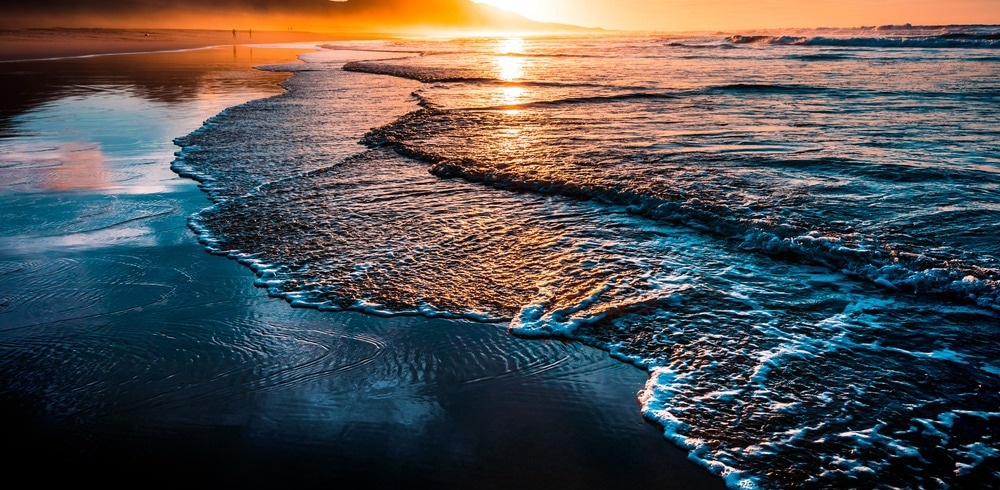A study published in Sensors presents a geometrical optical model to examine the impact of dynamic oceanic waves on the optical propagation of laser beams and the statistical behavior of turbulent small-scale air-sea interface facets under various environmental conditions. It suggests that the ocean surface and laser beam incidence angle significantly impact the laser beam's footprint size and propagation.

Study: Impact of a Turbulent Ocean Surface on Laser Beam Propagation. Image Credit: Don Pablo/Shutterstock.com
Deep Sea Challenges of Marine Technology and Oceanographic Engineering
More than 70 percent of the Earth's surface is covered by water. Over the years, the seas have been explored to fulfill both fundamental scientific curiosity and practical considerations, such as establishing shipping routes, tactical surveillance, and oil field maintenance.
However, the national oceanic and atmospheric administration (NOAA) estimates that 95% of the seas are undiscovered. Therefore, autonomous underwater vehicles (AUVs) have been developed to continue surveying the ocean and marine activities to collect data about this environment.
Autonomous aerial and underwater vehicles (AUVs) are rapidly evolving, and with this comes a growing requirement for reliable air-sea communication to provide efficient data transfer.
Despite developments in underwater acoustic communication (UAC), it experiences high latency and inter-symbol interference. As a result, UAC connections have low data speeds and are not secure over long distances.
Moreover, due to seawater's conductivity, high-frequency radio frequency signals attenuate more. Hence, most commercial radio equipment cannot be utilized underwater.
Underwater optical wireless communication
Underwater optical wireless communication (UOWC) promises high data rates across long distances, overcoming the limits of prior technologies. It is an excellent candidate for point-to-point communication on the atmospheric and oceanic channels and air-sea interface.
However, the air-sea interface involves a random communication path between the underwater receiver and the atmospheric transmitter. This impacts optical communication, laser-line scanning, air-to-sea imaging, and other remote sensing technologies.
A specular surface with two layers of differing refractive indices would characterize a quiescent air-sea interface. However, the air-sea interface is rough due to wind waves.
Most traditional and current approaches dealing with this roughness and its effect on optical propagation are statistical or theoretical. As of yet, no experimental investigations have been documented that characterize the micro-oceanic facets and ocean surface roughness and their effect on laser beam propagation over the air-sea interface.
Laser Beam Propagation in Artificial Wave Generation Experimentation
In this study, researchers generated artificial waves in a wave tank where the wind speed was changed to determine the effect of surface waves on laser beam propagation.
Laser beams were propagated under the wave tank's glass base. A high-speed camera mounted above the wave tank recorded data from discrete locations on the water's surface. The recorded data was compared to recognized ocean wave spectrum models.
The primary purpose of this research was to comprehend the interface slope and displacement and evaluate its subsequent effect on point-to-point optical wireless communication networks in free space above and below the interface.
The slope angles and refraction deviation in the cross-wind and along-wind axis were computed and obtained by shifting the centroid of each sample relative to the original quiescent interface.
Significant Findings of the Study
The rough air-sea interface deteriorates the laser signal propagation. Micro-electromechanical system (MEMS) deformable mirrors reduce the effects of the turbulent air-sea interface.
A single facet's cross-wind and along-wind slopes determine the laser's new direction and trajectory after it passes through the air-sea interface. The facet area decreases when the wind speed rises, which raises the slope angle of each facet.
However, the along-wind offset deviation increases more than the cross-wind offset deviation. This causes an increase in the dispersion of refraction and slope angles.
These properties of the oceanic facet, coupled with laser propagation, can be utilized to improve the performance of free space optical communication via the air-sea interface by tracking the ideal facet with the desired route to the receiver.
Limitations and recommendations
The maximum wind speed generated in the experiment was just 3.3 m/s since, above this speed, wave breaking occurs, resulting in gas bubbles and whitecap formation. Therefore, creating or maintaining an optical communication channel over the ocean's surface with high performance will be challenging.
This research can be improved by exploring laser propagation with larger beam diameters at the interface with greater wind speeds. It would allow for more reliable models that apply to the larger dynamic range, particularly in regions with extremely low frequencies.
Reference
Alharbi, O., Kane, T., & Henderson, D. (2022) Impact of a Turbulent Ocean Surface on Laser Beam Propagation. Sensors. https://www.mdpi.com/1424-8220/22/19/7676/htm
Disclaimer: The views expressed here are those of the author expressed in their private capacity and do not necessarily represent the views of AZoM.com Limited T/A AZoNetwork the owner and operator of this website. This disclaimer forms part of the Terms and conditions of use of this website.